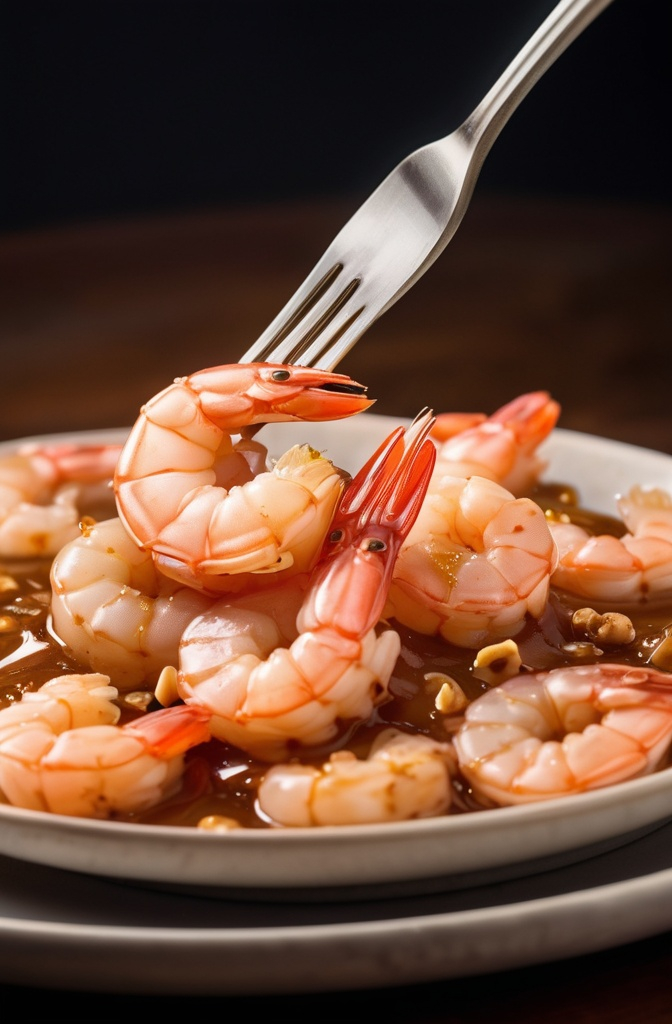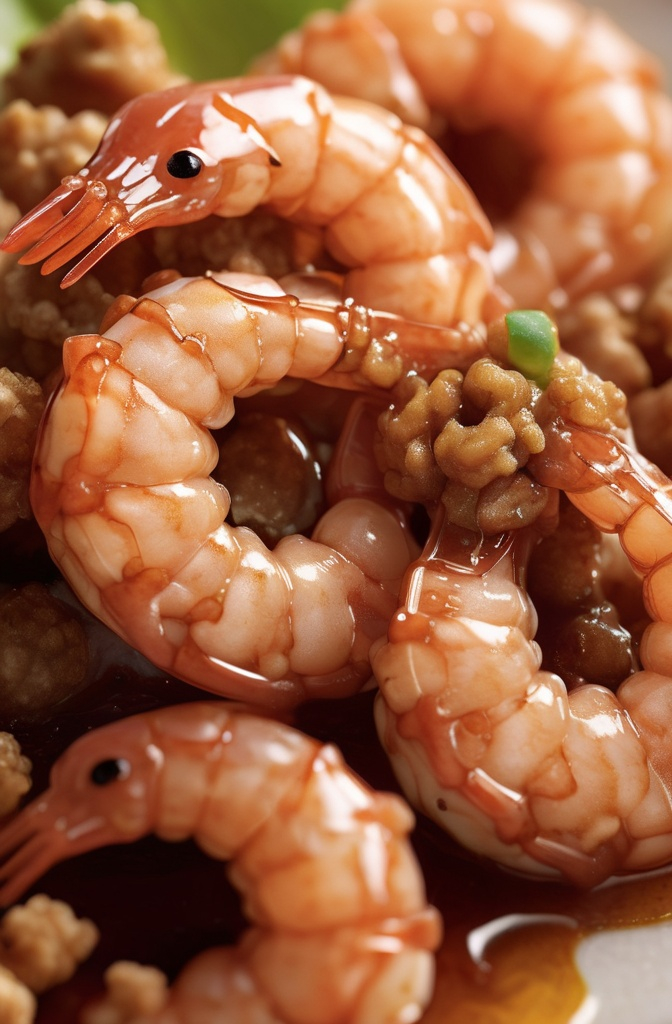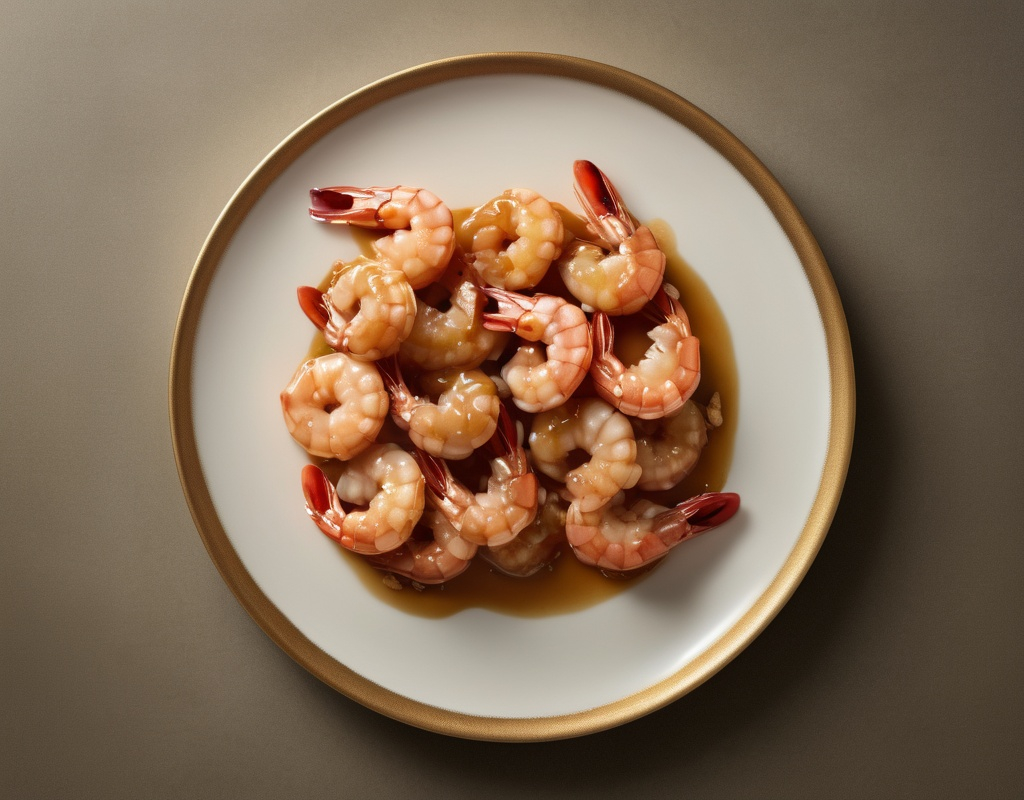If you’ve ever sunk your teeth into that crispy-sweet, ridiculously creamy shrimp at Panda Express, you know exactly what I’m talking about. That sticky, honey-glazed magic with a crunch that hits your molars just right. The kind of crunch that whispers, “Yeah, you didn’t order the orange chicken today, did you?” This dish—Honey Walnut Shrimp—has no business being fast food. Yet, it’s a staple on the Panda Express menu and arguably one of the most technically sophisticated items in American-Chinese quick service. So why is it so good? What makes it tick? Let’s unpack the real mechanics, and artistry, behind the dish.
The Dish That Shouldn’t Work—But Somehow Does
On paper, the idea of deep-fried shrimp tossed in a mayo-based sauce and candied nuts sounds…wrong. Shrimp + mayonnaise + sugar? Not exactly your classic culinary holy trinity. But here’s the thing—it works. Flawlessly. There’s chemistry at play here, not just flavor.
The roots of the dish are traced back to Cantonese cuisine—“he tao xia” (核桃虾)—a banquet classic. But what Panda Express did was give it a fast-casual American spin. Lighter batter. Thicker glaze. Mass appeal. In 2010, Panda Express added it to the menu as a premium item. It costs more than other entrees—and people still buy it in droves.
In fact, Panda Express has reported that Honey Walnut Shrimp ranks consistently in the top 5 best-sellers nationally. A 2015 consumer survey from Technomic found it had one of the highest satisfaction scores among all quick-service seafood items.
Let’s Break This Down: The Three Pillars of Flavor
H2: The Shrimp – Size, Source, and Structure
You can’t fake good shrimp. Panda Express uses extra-large (21-25 count per pound) tail-off, peeled and deveined shrimp. They’re sourced from trusted suppliers—often from Southeast Asia, particularly Vietnam and Thailand. These regions use aquaculture farms that adhere to stringent quality standards, many of which are certified by groups like ASC (Aquaculture Stewardship Council).
The key here? Uniformity. Every shrimp needs to fry up exactly the same—golden, juicy, slightly sweet with that subtle saline bite. If you’re sourcing shrimp for a restaurant, consistency in size isn’t just about presentation. It’s about ensuring that 30 seconds in hot oil doesn’t turn into rubber bands on a plate.
Now, shrimp has high moisture content. That’s a killer for frying. So Panda Express lightly pre-dries the shrimp (this step gets skipped too often in home kitchens) before dredging them in a thin, egg-white batter. That’s where the crunch comes from.
H2: The Sauce – Not Just Mayo
Let’s not kid ourselves—the sauce is what makes this dish iconic. Creamy, tangy, sweet, rich. It’s not just mayonnaise and honey like many recipes online suggest. There’s depth here.
Through various taste tests and analysis, we know it’s a blend of:
- Real honey (for floral sweetness)
- Kewpie-style mayonnaise (eggier and more umami than standard mayo)
- Sweetened condensed milk (that silky texture? yeah, it’s this)
- Rice vinegar or lemon juice (for acidity)
- Touch of Dijon mustard or garlic powder (very subtle savory undertone)
The sauce is tossed after frying, and here’s a technique pro kitchens use: chill the sauce slightly. Tossing hot shrimp in cold sauce locks in texture—warm interiors, crisp exteriors, creamy coating. A warm sauce tends to sog out the batter within minutes.
Many fast-casual places try shortcuts—pre-coating shrimp or using shelf-stable mayo variants. That’s a mistake. It dulls flavor and ruins texture. Real culinary operations? They prep that sauce fresh daily.

H2: The Candied Walnuts – A Crunch With Consequences
These aren’t just any walnuts. They’re lightly caramelized, almost like brittle—but not quite. Panda Express uses a sugar syrup reduction, likely around 235–240°F (soft-ball stage), to glaze the walnuts. It’s tricky. Go too far, and they turn rock-hard. Not far enough, and they’re sticky and unpleasant.
The candied walnuts give you the third note in the dish’s “flavor chord”: texture contrast. They snap. They crunch. They ride in on the end of the bite, just as your palate starts to acclimate to the sauce. It’s that one-two-three punch that keeps people coming back.
Real chefs know this trick: balance soft and hard textures in the same bite, and you create interest. You create a dish that demands a second forkful.
What Culinary Pros Can Learn from Honey Walnut Shrimp
Even if you’re not in the fast-casual space, there are professional-level lessons to steal here.
H3: Emulsification in High-Volume Cooking
The sauce is an emulsion—fat and water living together happily. That doesn’t happen by accident. Professionals who understand the science of emulsification (and the importance of stable emulsifiers like lecithin in egg yolks) will recognize what’s going on here.
This dish teaches us that even in a high-speed kitchen, understanding the molecular structure of your ingredients gives you control.
H3: Flavor Layering in Fast Food
Three core flavor axes are at work: sweet, umami, and acid. Nothing bitter. Nothing overpowering. Even garlic, if used, is background noise.
Most casual diners don’t articulate this, but they feel it. Professionals can use this as a blueprint. Layer flavors—not in complexity, but in harmony. This is not the place for “more.” It’s the place for “just enough.”
H3: Ingredient Prep as Quality Control
Panda Express executes this dish consistently across more than 2,000 locations. That’s not easy. They do it with pre-portioned shrimp, batch sauces, and walnut candying protocols that are time and temperature sensitive.
For professional kitchens, the lesson is this: process doesn’t kill creativity. It protects it. Once your prep is dialed in, you’re free to focus on refinement, not firefighting.
Common Misconceptions
A lotta home cooks and even some pros think the dish is all about the mayo. It’s not. The mayo is a vehicle. The key is the balance between fry crispness and sauce viscosity. If your batter’s too thick, it turns soggy in seconds. If your sauce is too runny, it doesn’t coat properly.
Another mistake: using raw walnuts. That’s just lazy. Raw nuts in a dish like this taste like a mistake. Always toast or candy for complexity.
And no, you can’t just sub in cashews or almonds and expect the same magic. The bitterness and tannins in walnuts balance the sweetness in a way that no other nut does.

Trends and Innovations
We’re starting to see high-end chefs play with this concept. At Mission Chinese Food in New York, Chef Danny Bowien once did a riff with tiger prawns and fermented black bean glaze. In LA, there’s a food truck that does a tempura-battered version served on bao.
Even ghost kitchens are picking up the formula—spicy honey walnut shrimp, vegan walnut cauliflower, or Korean-style gochujang mayo versions are popping up on apps like DoorDash and Uber Eats.
There’s room to innovate. But the core template is solid gold.
Conclusion: Why This Dish Still Slaps in 2025
Honey Walnut Shrimp isn’t just a menu item. It’s a masterclass in controlled indulgence. It’s rich without being greasy, sweet without being cloying, complex without being confusing. For chefs and culinary professionals, it’s a case study in flavor engineering and operational excellence.
Wanna level up your menu? Steal its structure. Copy its layering. Understand its chemistry. And never, ever underestimate the power of a well-candied walnut.
Now excuse me—I gotta go figure out how to do this with scallops.
FAQs
What makes Panda Express Honey Walnut Shrimp so popular?
Its perfect balance of sweet, creamy, and crunchy textures hits all the right flavor notes for mass appeal.
Is the sauce just mayonnaise and honey?
No, it’s a complex emulsion of honey, mayo, condensed milk, and acidic notes like vinegar or lemon juice.
Why do professionals admire this dish?
It demonstrates mastery in texture control, flavor layering, and consistency across high-volume service.
Can I substitute other nuts for walnuts?
Technically yes, but you’ll lose the subtle bitterness that balances the sweetness.
How does Panda Express keep the shrimp crispy?
They use a light egg-white batter and toss hot shrimp in cold sauce to lock in texture.
Is this dish authentic Chinese food?
It’s inspired by Cantonese banquet cuisine but reimagined for American fast-casual tastes.
Can this dish be made healthier?
Yes, but lowering fat or sugar often compromises the flavor and texture that define it.
What size shrimp is typically used?
Extra-large shrimp, about 21–25 count per pound, for consistent texture and presentation.
Why do candied walnuts matter so much?
They provide a crucial crunch and a nutty-sweet contrast that elevates the whole bite.
Is it possible to innovate this dish?
Absolutely—chefs are experimenting with new proteins, sauces, and formats like bao or bowls.

Mariana is a passionate home cook who creates delicious, easy-to-follow recipes for busy people. From energizing breakfasts to satisfying dinners and indulgent desserts, her dishes are designed to fuel both your body and hustle.
When she’s not in the kitchen, she’s exploring new flavors and dreaming up her next recipe to share with the Foodie Hustle community.

